Combat aircraft. Suicide plane
Many will be outraged right after the headline. Author, what are you talking about? "Zero" does not crawl out of ratings of the same as you, films were made about him and in general ...
And in general, and in particular especially. I will not tire of repeating that the “rating”, where the pre-war carrier-based fighter is adjacent to the late-war fighter-bomber and the twin-engine heavy fighter, is the same rating where the VAZ-2101 will be considered next to the Ferrari. Approximately the same degree of “directness” of comparison. And what, both Italian models, on four wheels, with gasoline engines ...
So the ratings, where Zero are put on a par with Mustang, are so-so.
But first, let's talk about the plane. And for a snack we’ll leave why it suddenly turned into “the best”.
The birthday of Fighter Zero, or, in our opinion, Zero, was April 10, 1938. To say that the plane “didn’t enter” in the first time is to say nothing. Everyone criticized the project, both conservatives and progressives. The first did not like the closed cabin, for example. There was such a fashion for pilots deck aviation, lean out of the cockpit and control the landing glide path visually.
In addition to this trifle, which caused lively debate, the parties clashed in a serious battle following the presentation of the aircraft model in terms of weapons and speed priority over maneuverability, or vice versa. By the way, supporters and opponents were approximately equally divided.
That is, half were supporters of a super-maneuverable fighter with light weapons (2 rifle-caliber machine guns), the second half advocated a fast and well-armed fighter.
The debate is at an impasse, and I must say that all these disputes could have ruined the project, but diplomat Jiro Horikoshi, chief designer, promised to satisfy the demands of both parties.
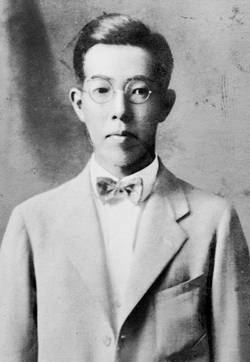
That is, to create a fast, maneuverable fighter with good weapons.
There are no miracles. Horikoshi was a very good designer. I would even say - at the world level, since I created more than one decent aircraft. But not brilliant. And the promise bordered either with genius or with deception.
What was more - judge for yourself.
On April 25, 1939, with official speed measurements, the “Project 12” (future “Zero”) developed only 491 km / h. Competitor F2A "Buffalo", born in 1937, produced 542 km / h in similar tests. As they say, feel the difference.
It is clear that it was not the airplane project that was to blame, but the engine. Japan, like all countries of the second aircraft manufacturing league, was content with what it was. Therefore, when the Americans, British and Germans already put 1 hp engines on their planes and higher, the most powerful engine from Mitsubishi, Zuisei 000, produced only 13 horses.
The Ministry of the Sea found a way out in installing an engine from Mitsubishi’s direct competitor, Nakajima. Nakajima-Sakae 12 gave out 940 hp, which was, in principle, comparable with world analogues, although this alignment was unlikely to please Mitsubishi specialists.
And with the Sakae engine, the plane did not just fly, but it flew very promisingly. And the Naval Ministry liked it so much that it was launched into the series without completing the main part of the tests, under the official designation "carrier-based fighter pilot type 0", or A6M1.
If you look impartially, you have to admit: the plane became a victim of propaganda. The Japanese military department was so eager to convince everyone of the creation of something so transcendental that it itself believed in it. Because the tests were held under sheer pressure from naval command.
Moreover, the military department insisted, contrary to the opinion of Mitsubishi, on the military tests in China, where by then military operations were in full swing.
The tests were conducted on the first six pre-production fighters as part of the 12th combined air group in July 1940. In parallel, another group of aircraft of the pre-production batch was tested on board the Kaga aircraft carrier, and after the tests it was also included in the 12th group.
Looking ahead, let's say that the combat tests were more than successful. After testing, the aircraft received the name "Marine type zero carrier-based fighter model 11" (A6M2 model 11) - "Rei-Siki Kanzo Sentoki", in short - "Reisen".
Zero’s actions in China sparked a wave of rave reviews. Newspapers were filled with reports of how a new fighter packs Chinese planes in packs.
On September 13, 1940, 13 Zeros were escorted by bombers and entered into battle with 30 aircraft of the Chinese Air Force, shooting down 25 of them (two of them still collided in the air). Of course, this caused a proper resonance, but ... "Zero" fought with I-15 and I-16 type 5 Soviet-made. And these planes, inferior in speed to a good hundred kilometers per hour and armed with two ShKASs, can be called full-fledged rivals? And under the control of Chinese pilots?
But enough for the Japanese. They really believed that the new fighter is worthy of the prefix "super". So an opinion was formed that stated that the Zero alone costs from two to five of any enemy aircraft. Well, blessed are those who believe.
And how, in fact, did the new aircraft stand out so much?
Armament. Yes, the standard of pre-war armament from 2-4 rifle-caliber machine guns (Bf.109C and D, Gladiator Gloucester, I-15, I-16 was blocked by Zero equipment, since 7,7 mm guns were added to two synchronous machine guns two 20 mm Mauser wing guns, licensed.
Maneuverability. It was. We will not deny it. But without hanging tanks. And without tanks, the range immediately became uninteresting. And in battle, tanks were often not dumped, and the Zero immediately became an iron. But, in principle, it was a very maneuverable fighter, it is worth giving it its due.
Speed. Yes, there was speed. The usual average speed for a monoplane fighter of that time was 500 km / h.
Range. Range - yes. Beautiful and real figure. “Zero” could fly at a cruising speed of 300 km / h very far, it does not matter, accompanying the bombers or performing their tasks. For us, the most important thing is that the plane could fly far.
Moreover, the “Zero” was not a feather. He weighed more than Messer, more I-16, as much as Kittyhawk and Hurricane. That is, the “feather” that will flutter, destroying everything around it, “Zero” was not.
But what was paid for all the good characteristics?
I already said that Horikoshi was not a genius. He was a very good specialist who understood what he was doing. And if he promised that the plane would be fast, nimble, able to fly far and shoot well, that would have to be done. Due to what? Given that the motor was very so-so for a car of this weight, we only have one parameter that could be played.
Protection that was not
Yes, of the three tons of A6M1, not a single gram was spent on protection. Protected tanks, an armored head, an armored head, in general, everything with the prefix “armor” on the “Zero” was not present. That is, in the frontal projection, the pilot was still somehow protected by the engine, but on the other sides - no. And ANY rifle caliber bullet could be the first and last for the Zero. Especially hitting the pilot.
Until now, we have a very erroneous opinion that the Zero is something small and maneuverable. Alas, many were mistaken, including our authors too. I will cite an example from an article Legendary "Zero".
Let's stick to some phrases.
So, about the "thoughtful and lightweight" design. If the reasonableness is that everything that could give the pilot a chance to survive the battle is removed from the plane ... No, I still can’t call THIS “reasonableness”. This is despair in half with stupidity. But - a little later about this. Now I’ll just note that the “ingenious” creator of Zero, Jiro Horikoshi, was for some reason subsequently suspended from work on the development of the aircraft. Suddenly so.
This is a very interesting passage. Let's compare, perhaps ... With the P-40 Tomahawk and the Yak-1, for example.
So, A6M2 / R-40C / Yak-1.
Wing span, m: 12,0 / 11,38 / 10,0
Wing area, sq. m: 22,44 / 21,92 / 17,15
Length, m: 9,05 / 9,68 / 8,48
Maximum mass, kg: 2 757/3 424/2 995
Doesn't add up. Yes, “Zero” is easier than classmates, it is. But about the sizes - sorry. The Tomahawk was that bandura, and, as you see, it didn’t exceed its size. So if anyone here was small, this is not about Zero. This is about Yak.
Speaking of weight. Yes, the A6M2 was lighter, but who said it was good? It was for these aircraft that there was a restriction on the speed of diving, because the Zero could not be dispersed “to the stop”. It just fell apart. What the Allies used, moving away from the Japanese precisely on a steep dive.
How they won the Zero
Mostly on the pages of newspapers. There victories were simply amazing.
Nimble "Zero" that re-I-16 and I-15 biplane? You believe? Me not. And this could be finished.
Hartman and Rally as one. However, as Suvorov used to say: "Write a hundred thousand, why are you Basurmans sorry!" Lied and Hartman, and Rally, the Japanese worse? So it was possible to say anything at all, if only there was any sense.
However, it is worth a look, but in general, how did Zero have successes?
But not very luxurious.
If you do not take the battle in Pearl Harbor, then for the rest all the bravura reports are Japanese propaganda. In fact, the Asia-Pacific region (APR) was equipped with far from the best aviation units of allies with not the most modern technology.
It is logical: in 1941, the British Spitfires reflected German air raids on the islands and in North Africa, and no matter how the colonies were. Accordingly, the Brewsters, Buffalo and Hurricanes of the first models did not look at all against Zero. Approximately the same as the Chinese I-15.
This, in fact, is the key to the success of Zero. Experienced pilots at the controls of the latest aircraft in 1940-41 against not the best contingent of allies on older aircraft.
Naturally, the Japanese beat everyone in the tail and mane. Naturally. Americans and British washed their face with blood, but studied. And then? Quote again.
Hmm ... also doubtful. "Mustang" became a plane for battle, and not to increase enemy statistics only in 1944, "Spitfire" as it were from 1936 in a series, but it was produced very tightly. Corsair and Hellcat? Sorry, the Wildcat in the confrontation with the Zero had a ratio of 5,1 to 1, which means that for 5 downed Zero there was one Wild Cat.
The battle in the Coral Sea has already put everything in its place. 3 Japanese aircraft carriers versus 2 American. Losses are equal, but the Americans foiled the attack on Port Moresby. And two battered Japanese aircraft carriers (Zuikaku and Shokaku) did not take part in the battle at Midway Atoll, which ended in a deafening slap in the face of the Japanese fleet.
So why didn’t such disparate Zeros compete with American (not Mustangs and Corsairs) airplanes?
And one cannot help recalling April 18, 1943, when the Zero could not do anything with the American planes that sent Admiral Yamamoto to the other world. Moreover, the “Zero” did not even fight with the Wildcat, but with the Lightnings. Twin-engine long-range fighter R-38. Yes, there were 14 against 6, but they were Zero!
As a result, both bombers and a pair of Zeros shot down the R-38, and only one fighter was lost.
In general, I can continue indefinitely, that is, until September 1, 1945. The essence of this will not change. “Zero” was good only against aircraft that could not provide him with proper resistance. I emphasize that I have good pilots on board.
And with the flight crew of the Japanese, problems began already in 1942.
Indeed, how do you like? 2-3 bullets of any caliber - and instead of “Zero” we observe a good such torch. Given the frank frostbite of Japanese pilots who did not want to escape, surrender, and so on, a downed plane usually meant a lost pilot.
Therefore, by 1942, the pilots for the paper Zero began to simply end. And in 1943, such apparently “trained” pilots missed the Americans who flew nearly 500 nautical miles and staged Yamamoto's ascension. And came back.
Yes, in Japan, when the resource of the pilots began to melt rapidly from the fact that they burned down with shot down "beautiful" aircraft, they began to move. But it was too late.
Six or eight large-caliber wing machine guns of American fighters (and the bombers did not yawn, because everyone wanted to live) were smashed to pieces and flaps of the Zero, killing the pilots.
Guns do not even need, why? Six trunks spit out such a heap of metal, there would be at least something horrible. But horrible - "Zero" ended his journey with a short but spectacular torch. Together with the pilot.
And the Japanese, we must pay tribute to them, came to their senses and rushed in pursuit. Already in 1941, Horikoshi was removed from the post of chief designer and appointed Mijiro Takahashi. The latter succeeded by reducing the wing and hardening the structure to increase the dive speed to 660 km / h.
We tried to squeeze at least something out of the Sakae engine, but ... Speed increased on the A6M5 model by as much as 20 km / h and amounted to 565 km / h at an altitude of 6000 m.
A6M5 went into series in 1943. That's right when the Americans got the Hellcat. Six large-caliber "Browning" regularly sent the Japanese to the temple of Amaterasu, and 7,7 mm bullets safely bounced off the armor of American fighters. Yes, and shells "Hellcat" with a creak, but kept. So the beating of Japanese pilots simply entered a new orbit.
At the beginning of 1944, another version of the Zero appeared - the A6M5b model 52b, on which - finally! - tried to introduce protection for the pilot. And in general to do at least something for the sake of the fighter from the word "exterminate", and not "exterminate."
On the plane appeared 50 mm bulletproof glass! On this, however, with the armor finished, but nonetheless. The attempt was counted.
Also on the plane there was a carbon dioxide engine fire extinguishing system. In the event of a fire, carbon dioxide from the high-pressure cylinder instantly filled the fuselage fuel tank and engine compartment.
Well, and quite miraculously looks strengthening weapons. One of the synchronous 7,7 mm machine guns was replaced with a 13,2 mm Type 3 machine gun. I wrote about this monster, a pirated copy of the Browning M2, converted to a 13,2 mm cartridge from the licensed Hotchkiss. What was, then set. This was the first strengthening of weapons since the start of serial production. Let me remind you, 1944.
It is clear that everything looked sad, but alas, the Zero could not be completely replaced: for the A7M, Repp could not bring the engine to mind, and the J2M Raiden did not want to fly at all.
It is clear that in 1944, a plane born in 1938 was simply irrelevant, but nevertheless, they tried to squeeze something else out of it.
A6M5s model 52s received a pair of the same 13,2 mm Type 3 machine guns in the wings, and the remaining synchronous 7,7 mm machine gun was finally thrown out as unnecessary.
The pilot received an 8-mm armored back! Just for the sake of comparison: the same armor plate was on the Polikarpov I-15 fighter in 1933. But on the A6M5s they also installed 55 mm bulletproof glass in the rear of the flashlight!
The speed difference with the same “Corsair” was 90 km / h, I don’t know what the American machine gun bullets said, stitching an 8-mm armor back with the pilot, maybe laughing. But the fact, in 1944, “Zero” finally turned into a whipping boy.
The latest modification of the A6M8 with the new Kinsay engine is as much as 1500 hp. in the series did not go, because Japan ended as such. But tests were carried out in 1945.
Weapons were reduced to two 20-mm guns and two 13,2-mm machine guns, the synchronous one was removed, since it simply did not fit in the compartment with the new engine. The aircraft could carry a 500-kg bomb under the fuselage and two 350-liter outboard fuel tanks under the wing.
A6M8 in tests developed a speed of 573 km / h at an altitude of 6000 m without external suspensions. For 1945 - a sad result. "Corsair" at the same height gave out more than 700 km / h.
So, excuse me, where is the “miracle plane” that scared everyone and everything? I do not see.
I see a rather weak and defenseless aircraft made of sticks and matter, really suitable for fighting planes with a lower class. No more.
But the point is not even LTH, now we will come to the essence of the material.
Almost 11 "Zero" of all modifications. How many pilot lives did they take? Lot. By 000, there were almost no experienced naval pilots in Japan, and those who remained could not resist the Americans with more advanced aircraft.
So the A6M Zero can be safely called a plane that left naval fighter aircraft without pilots. They simply died under bullets and burned in the cabins of this “miraculousweapons».
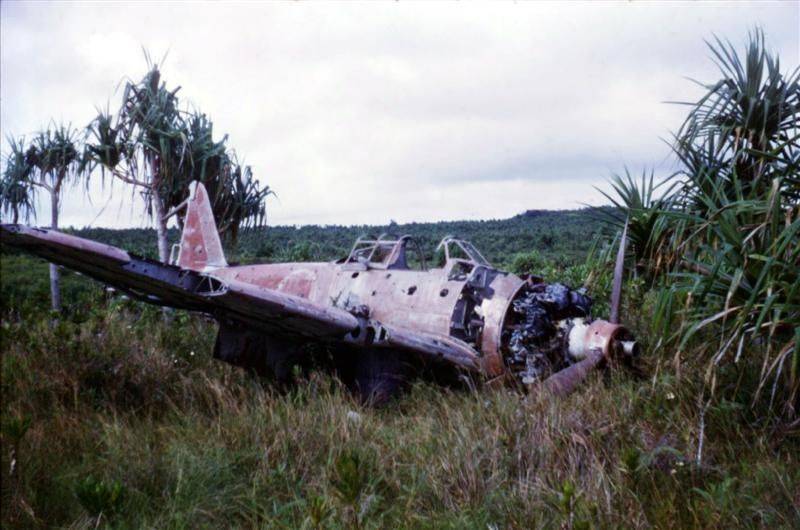
But that is not all. Continuous attempts to make this squalor become a full-fledged fighter led to the fact that Mitsubishi was spending resources on the Zero, and work on the Raiden and Repp was greatly inhibited.
“Raiden” began to develop in 1939, “Repp” in 1942, when it became clear that the “Zero” is really zero. But the first flew only in 1942, and the second in 1944. When it was already clearly late. And fast and armored American "cats" and "pirates" ruled the ball in the sky.
LTX A6M-5
Wingspan, m: 11,00
Length, m: 9,12
Height, m: 3,57
Wing area, м2: 21,30
Weight, kg
- empty aircraft: 1 894
- normal takeoff: 2 743
- Maximum takeoff: 3083
Engine: 1 x NK1F Sakai 21 x 1100 hp
Maximum speed km / h: 565
Cruising speed, km / h: 330
Practical range, km: 1920
Maximum rate of climb, m / min: 858
Practical ceiling, m: 11 740
Crew, person: 1
Armament:
Synchronous on the fuselage:
- two 7,7 mm machine guns or
- one 7,7 mm machine gun and one 13,2 mm machine gun or
- two 13,2 mm machine guns.
Two 20 mm wing guns.
A6M "Zero" has the right to the title of the worst carrier-based fighter of World War II, since it did not at all correspond to the canons of the fighter of that time. Such a plane could only appear in Japan, with its frankly hateful code "Bushido."
He appeared. And he took so many pilots with him that Japan actually lost the sky in 1942, a year after entering the war.
Where, you ask, all these tales that the Zero was so cool? Yes, everything is from there. Stories in favor of the losers. The fact that Japan staged a blitzkrieg in the Pacific Ocean, even cooler than Germany in Europe, is a fact.
And so the victory on such a serious opponent seems to be twice as honorable. So some “historians” talk about the invulnerable “Zero” and other wonders of the Japanese military genius.
Believe it or not is a private matter for everyone. At one time (the war with China in 1940), the Zero was nothing, then it was just an airplane for a one-time kamikaze, nothing more.
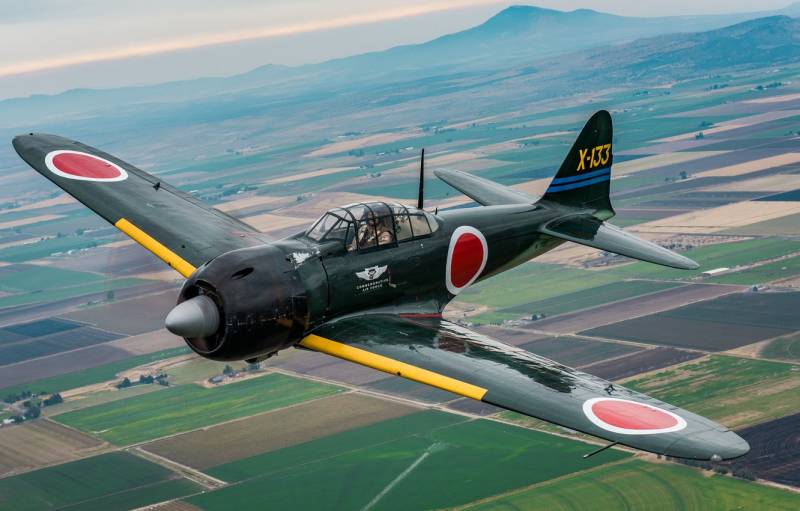
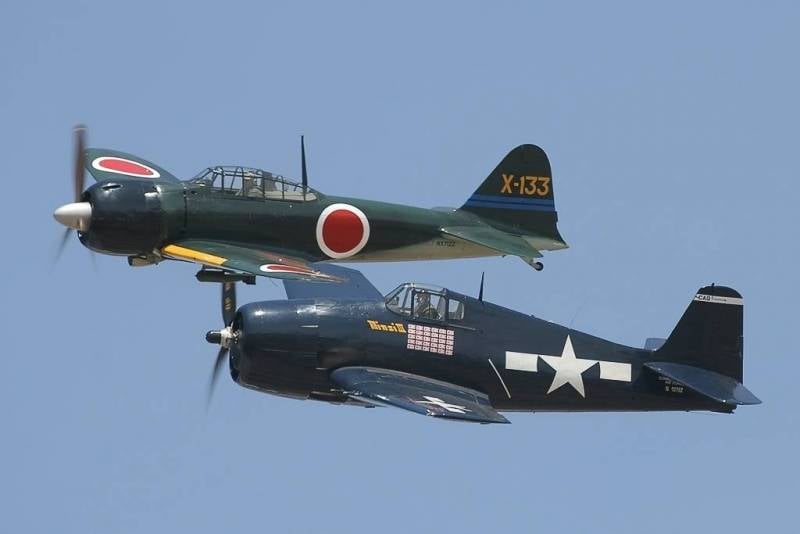
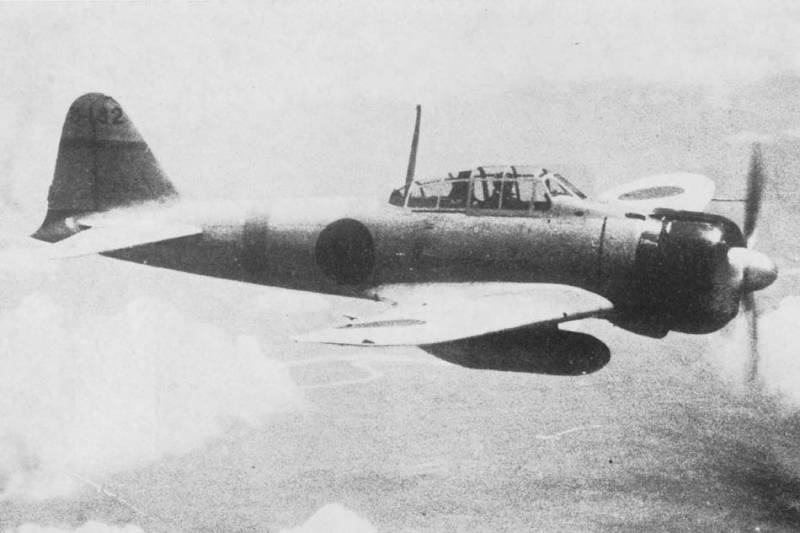
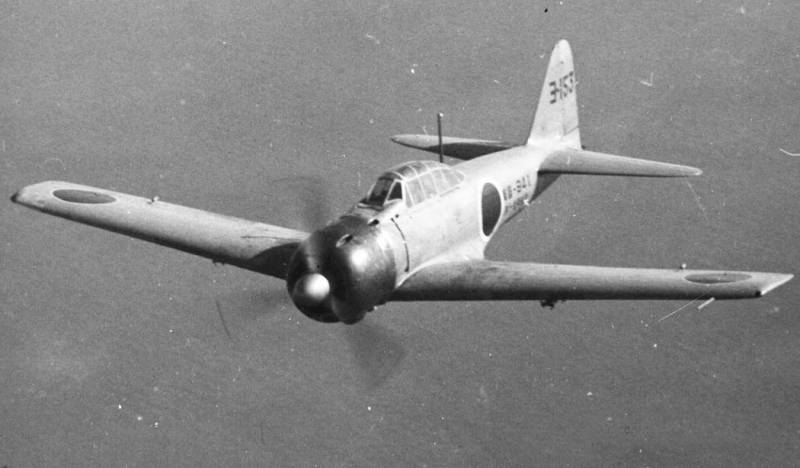
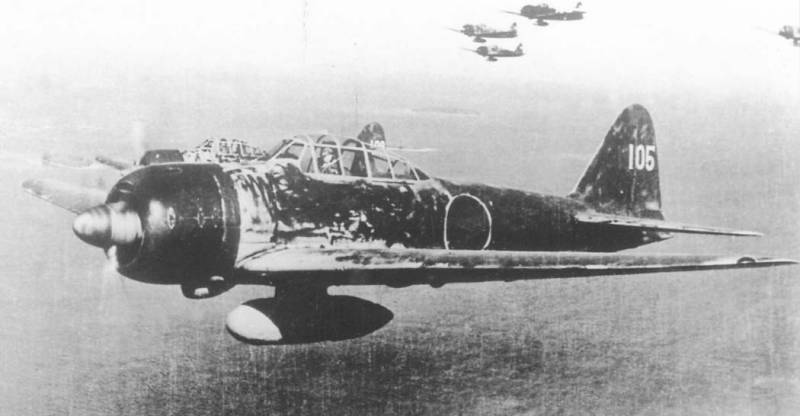
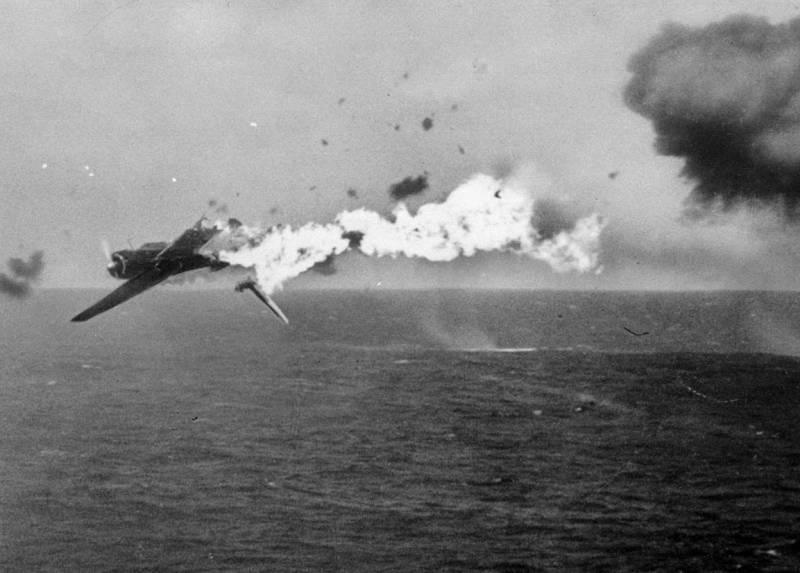
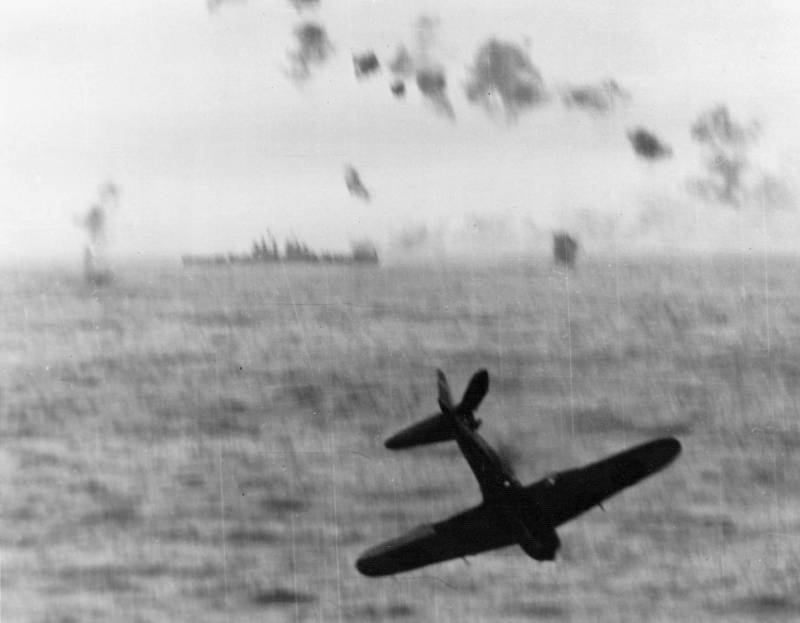
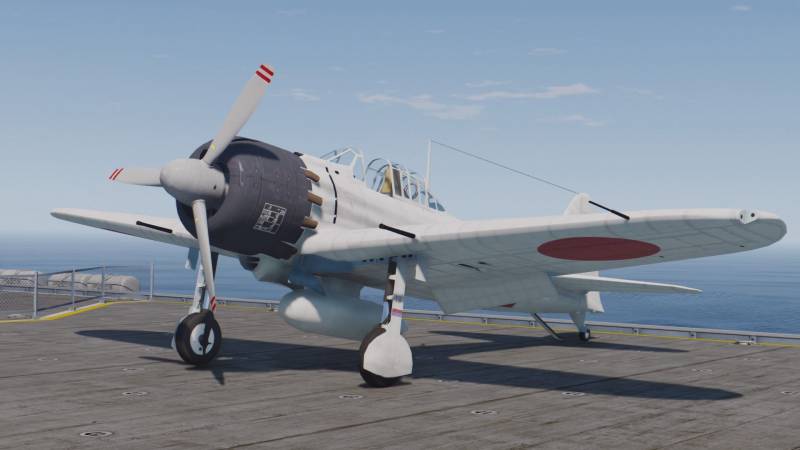
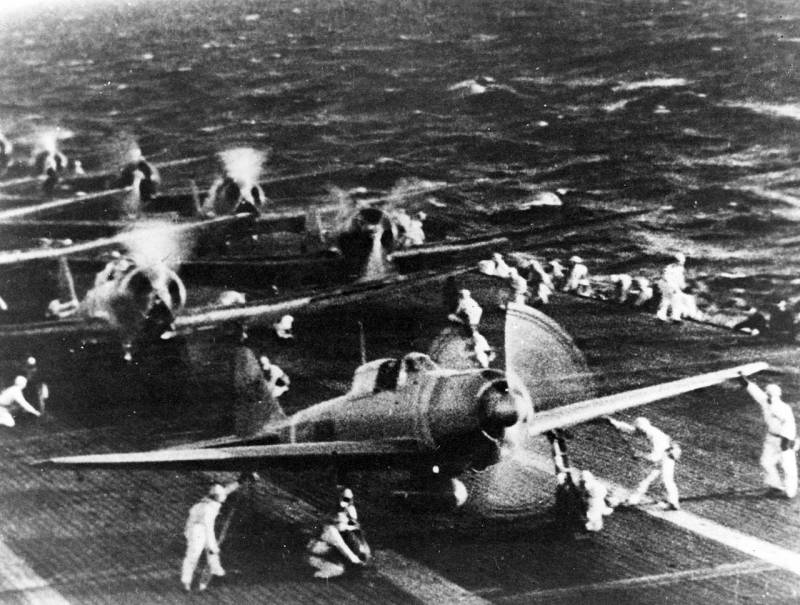
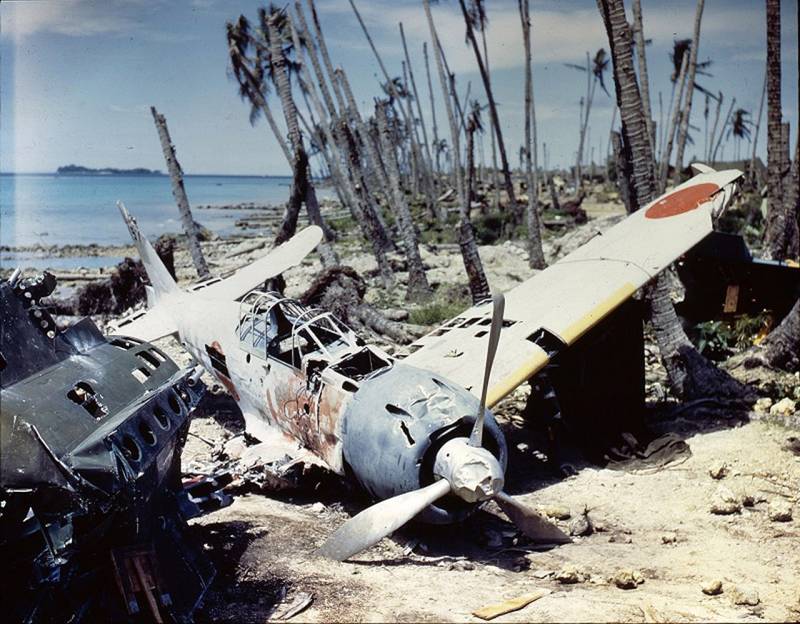
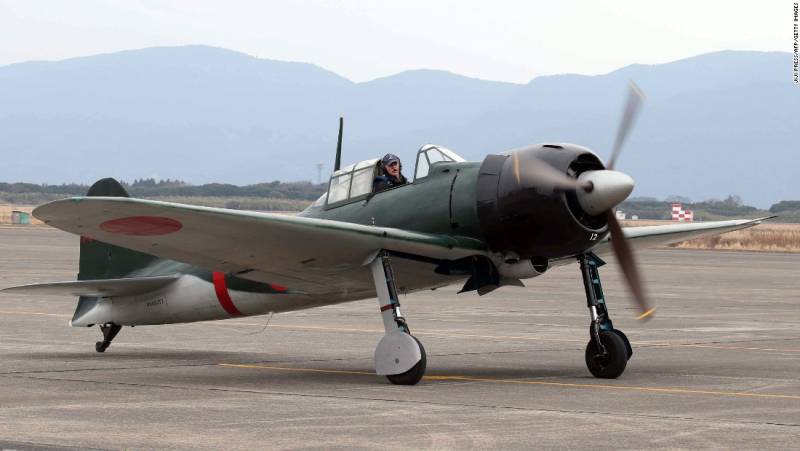
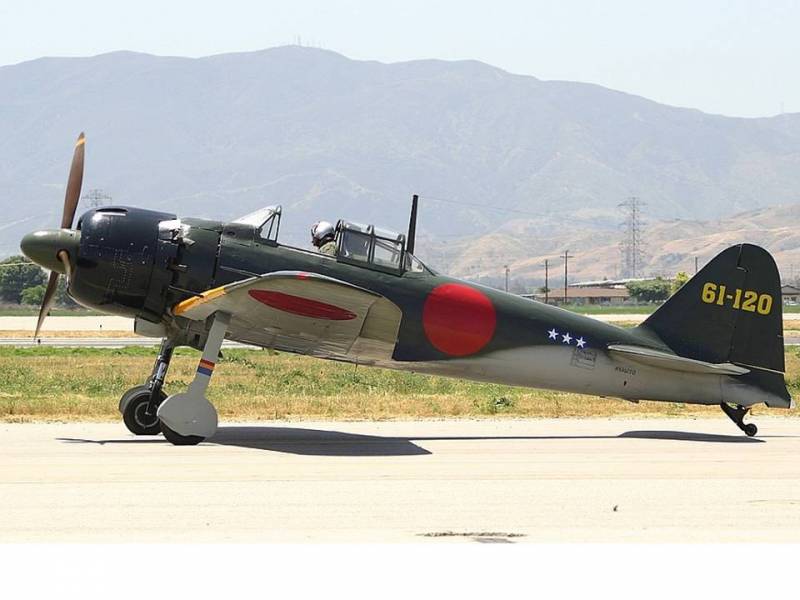
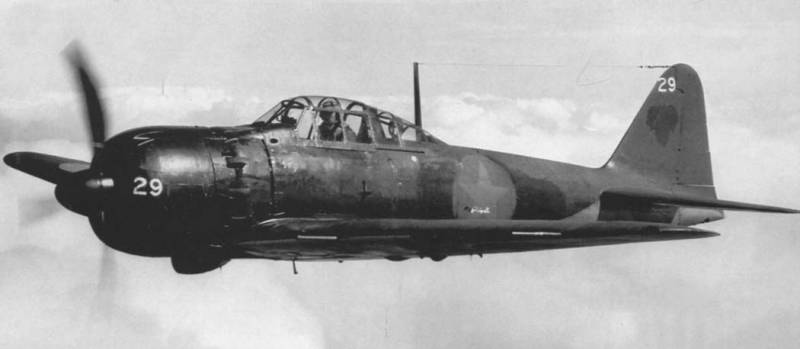
Information